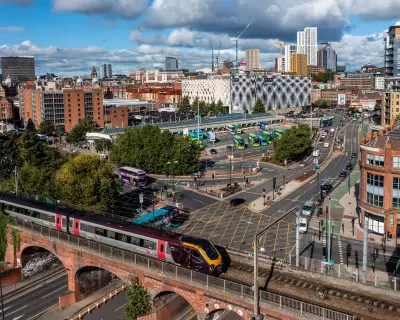
Oxford has ushered in a new era of urban travel as controversial congestion charges officially take effect across the city centre. The scheme, one of the most ambitious of its kind in the UK, aims to dramatically reduce traffic congestion and improve air quality in the historic city.
What Drivers Need to Know Now
The new charging system operates across six designated zones within Oxford, affecting thousands of motorists daily. Unlike London's single congestion charge zone, Oxford's approach divides the city into multiple areas with varying fee structures.
Key Charging Details
Private car drivers will face charges between £2 and £4 depending on the specific zone and time of travel. The fees apply during peak hours from 7am to 7pm, Monday through Saturday, with no charges on Sundays and bank holidays.
Who Gets Exemptions?
Several groups qualify for full or partial exemptions from the new charges:
- Residents within the charging zones receive 90% discounts
- Blue Badge holders travel free of charge
- Emergency service vehicles are completely exempt
- Businesses can apply for temporary permits for essential deliveries
The Bigger Picture: Oxford's Transport Revolution
This initiative forms part of Oxford's broader strategy to become a zero-emission transport city by 2030. City planners hope the charges will encourage more residents and visitors to use public transport, cycle, or walk for their journeys.
Local authorities have invested significantly in improving bus services and cycling infrastructure ahead of the charge implementation. Additional park-and-ride facilities have been expanded on the city outskirts to accommodate commuters choosing to leave their vehicles outside the charging zones.
Controversy and Support
The scheme has generated heated debate among Oxford residents and business owners. While environmental groups and cycling advocates strongly support the measures, some local traders worry about the impact on customer numbers and delivery costs.
Opposition groups have organised several protests, arguing that the charges disproportionately affect lower-income drivers and could harm the local economy during already challenging times.
Looking Ahead
Transport officials will closely monitor the scheme's impact over the coming months, tracking changes in traffic volumes, air quality measurements, and public transport usage. The data collected will inform potential adjustments to the charging structure and help shape future transport policy not just in Oxford, but potentially in other UK cities considering similar measures.
For now, Oxford drivers must adapt to this new reality of urban travel—one that prioritises cleaner air and reduced congestion over convenience for private vehicles.





